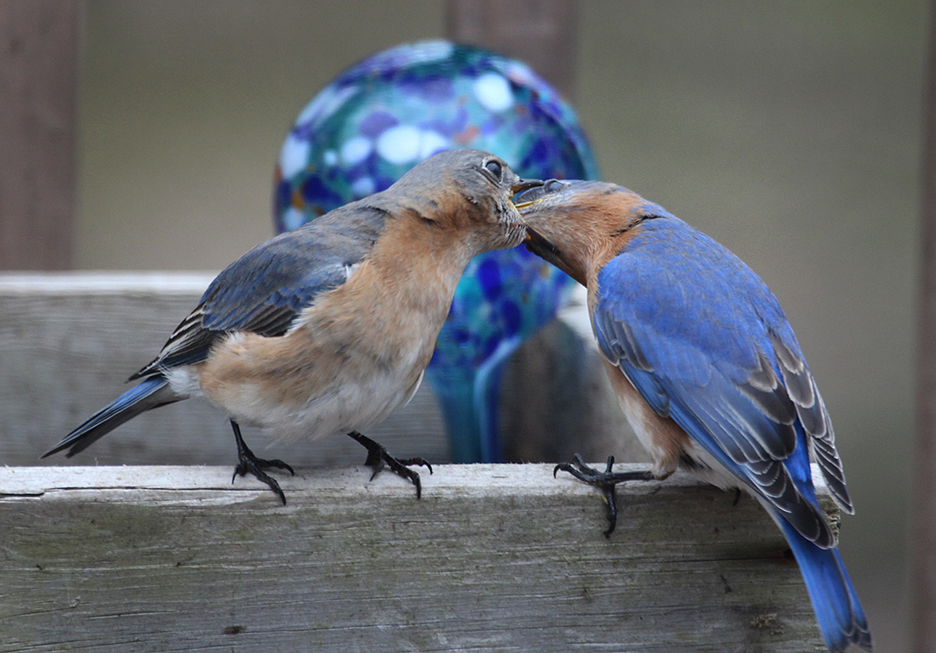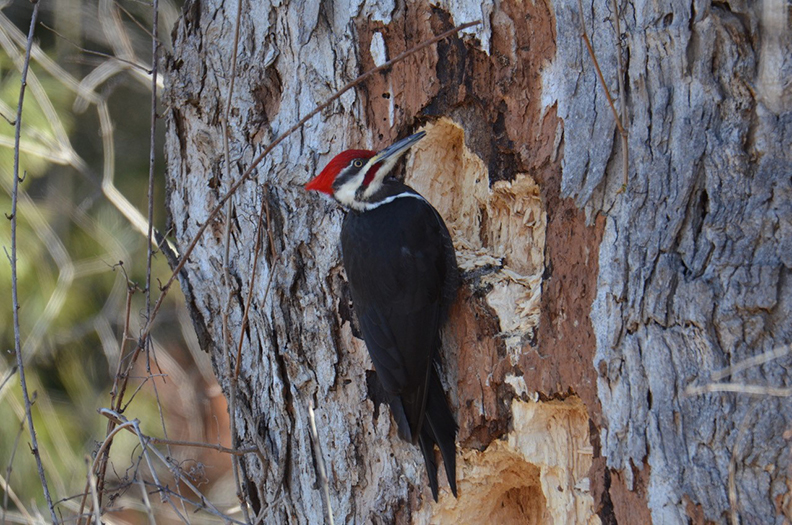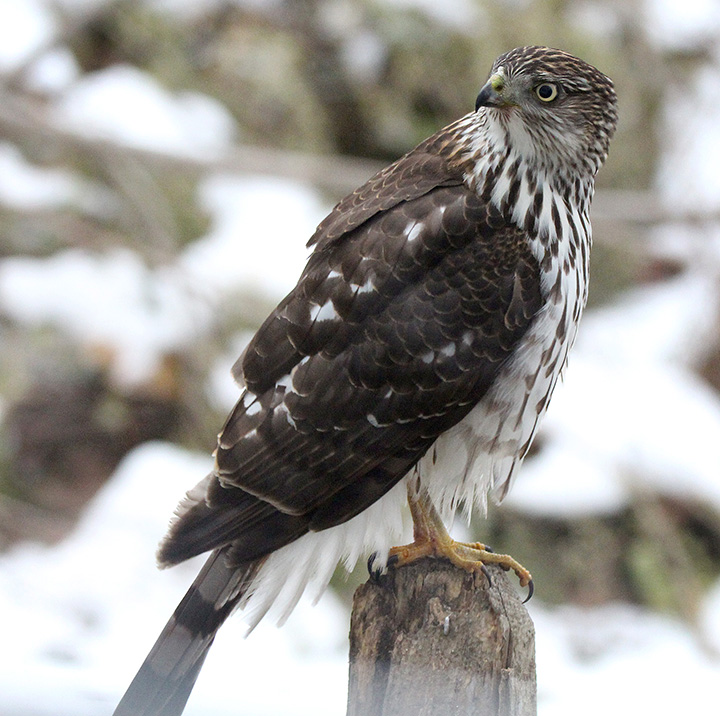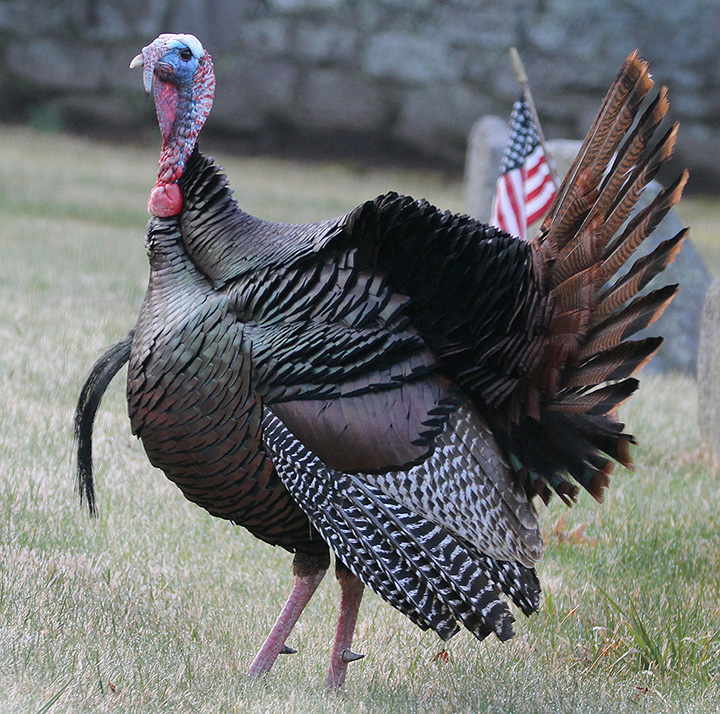Bluebird Courtship

PHOTO: A male eastern bluebird feeds his mate mealworms in a backyard in Danbury, Connecticut, April 2020. Merganser Lake. Photo by Chris Bosak

by Chris Bosak
Weirs Times Columnist
Is there anything more romantic than shoving a few dried mealworms into your mate’s mouth? Not if you’re a bluebird.
“My” bluebirds are still coming around daily. For the past few days, I’ve watched the male feeding the female, even though she could easily get her own mealworms a few feet away. What fun would that be? Where’s the romance in that? How would she really know if he was the one?
It’s part of the courtship, of course, but it’s also fun to watch. Every time I saw them land on the deck railing together I’d wait a few seconds and, sure enough, the male would jump down to grab a few worms and go right back up to feed his mate.
I feel fortunate that the bluebirds are still visiting daily, but they won’t be using the bluebird box I purchased and set up in the backyard. They have checked it out a few times but don’t seem that interested in it. It’s not proper bluebird habitat, I admit. They prefer flat, open spaces like a meadow and my yard is rather wooded. A chickadee pair has been looking at it pretty seriously lately so I’d love to see them use it.
In addition to the bluebirds, I have a cardinal pair that frequents the feeders on the deck. The male has been feeding the female and the female flutters her wings as she eats. It’s great theater. Better than anything I’ve seen on Netflix.
The other day, I noticed a blue jay fly into a nearby tree. It landed next to another blue jay and, you guessed it, started feeding its mate. No social distancing in the bird world, for sure. It’s time to create the next generation of birds.
Every source I’ve come across lists three potential reasons why birds feed their mates: so the female can see if the male is worthy, to strengthen the pair’s bond, or to provide extra nutrition to the female. One source I found reported that scientists debunked the bond theory and said it was all about getting the female extra nutrition.
Well, for whatever it’s worth, I’m debunking the scientists’ theory. Here’s why. If the act of the male feeding the female is all about nutrition, then why does this behavior take place at bird-feeding stations? If the female needs nutrition so badly, she can hop a few feet to the left and get all the food she wants. It would probably be easier and require even less energy than craning her neck awkwardly so the male can get the food into her mouth.
If the behavior took place exclusively near the nest during a time when the female had to save her energy for raising youngsters, then I could buy the nutrition theory. But it doesn’t, so I don’t. I guess you could argue that the birds are practicing for when that time comes, but I don’t buy that either.
I’m not a hopeless romantic, but I think it’s more about courtship and bonding. Then again, what do I know?
Chris Bosak may be reached at chrisbosak26@gmail.com or through his website www.birdsofnewengland.com



